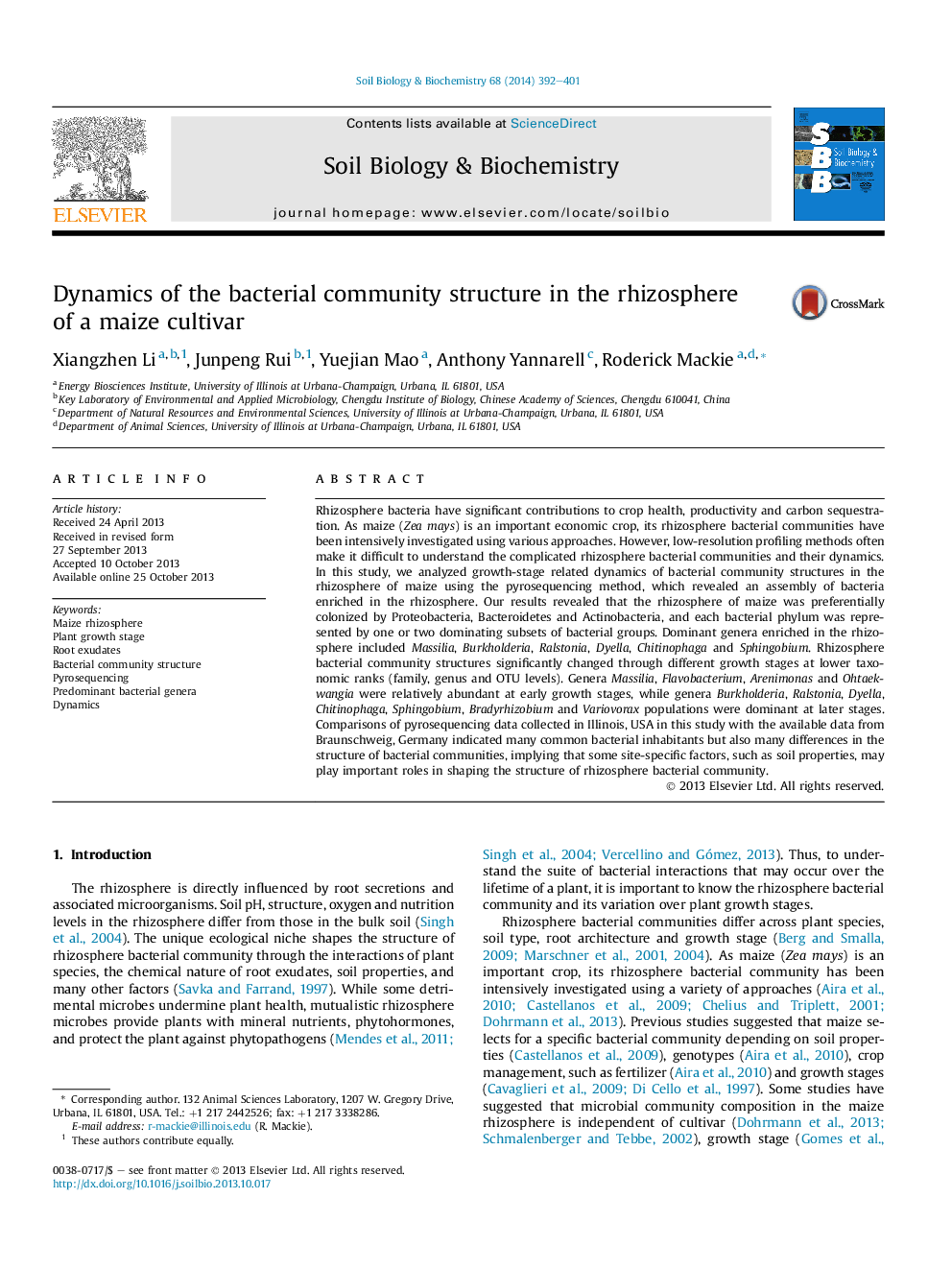| Article ID | Journal | Published Year | Pages | File Type |
|---|---|---|---|---|
| 8365179 | Soil Biology and Biochemistry | 2014 | 10 Pages |
Abstract
Rhizosphere bacteria have significant contributions to crop health, productivity and carbon sequestration. As maize (Zea mays) is an important economic crop, its rhizosphere bacterial communities have been intensively investigated using various approaches. However, low-resolution profiling methods often make it difficult to understand the complicated rhizosphere bacterial communities and their dynamics. In this study, we analyzed growth-stage related dynamics of bacterial community structures in the rhizosphere of maize using the pyrosequencing method, which revealed an assembly of bacteria enriched in the rhizosphere. Our results revealed that the rhizosphere of maize was preferentially colonized by Proteobacteria, Bacteroidetes and Actinobacteria, and each bacterial phylum was represented by one or two dominating subsets of bacterial groups. Dominant genera enriched in the rhizosphere included Massilia, Burkholderia, Ralstonia, Dyella, Chitinophaga and Sphingobium. Rhizosphere bacterial community structures significantly changed through different growth stages at lower taxonomic ranks (family, genus and OTU levels). Genera Massilia, Flavobacterium, Arenimonas and Ohtaekwangia were relatively abundant at early growth stages, while genera Burkholderia, Ralstonia, Dyella, Chitinophaga, Sphingobium, Bradyrhizobium and Variovorax populations were dominant at later stages. Comparisons of pyrosequencing data collected in Illinois, USA in this study with the available data from Braunschweig, Germany indicated many common bacterial inhabitants but also many differences in the structure of bacterial communities, implying that some site-specific factors, such as soil properties, may play important roles in shaping the structure of rhizosphere bacterial community.
Keywords
Related Topics
Life Sciences
Agricultural and Biological Sciences
Soil Science
Authors
Xiangzhen Li, Junpeng Rui, Yuejian Mao, Anthony Yannarell, Roderick Mackie,
